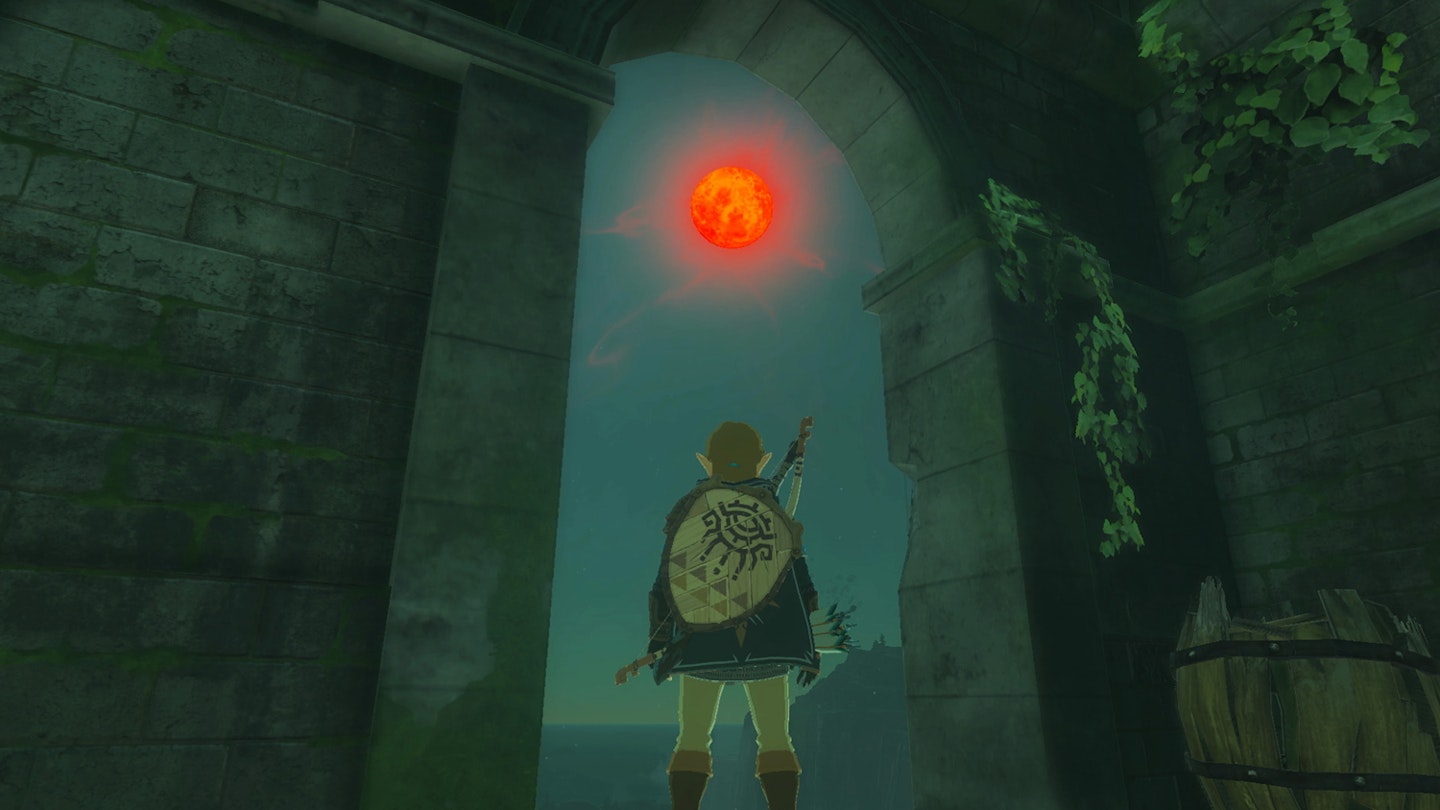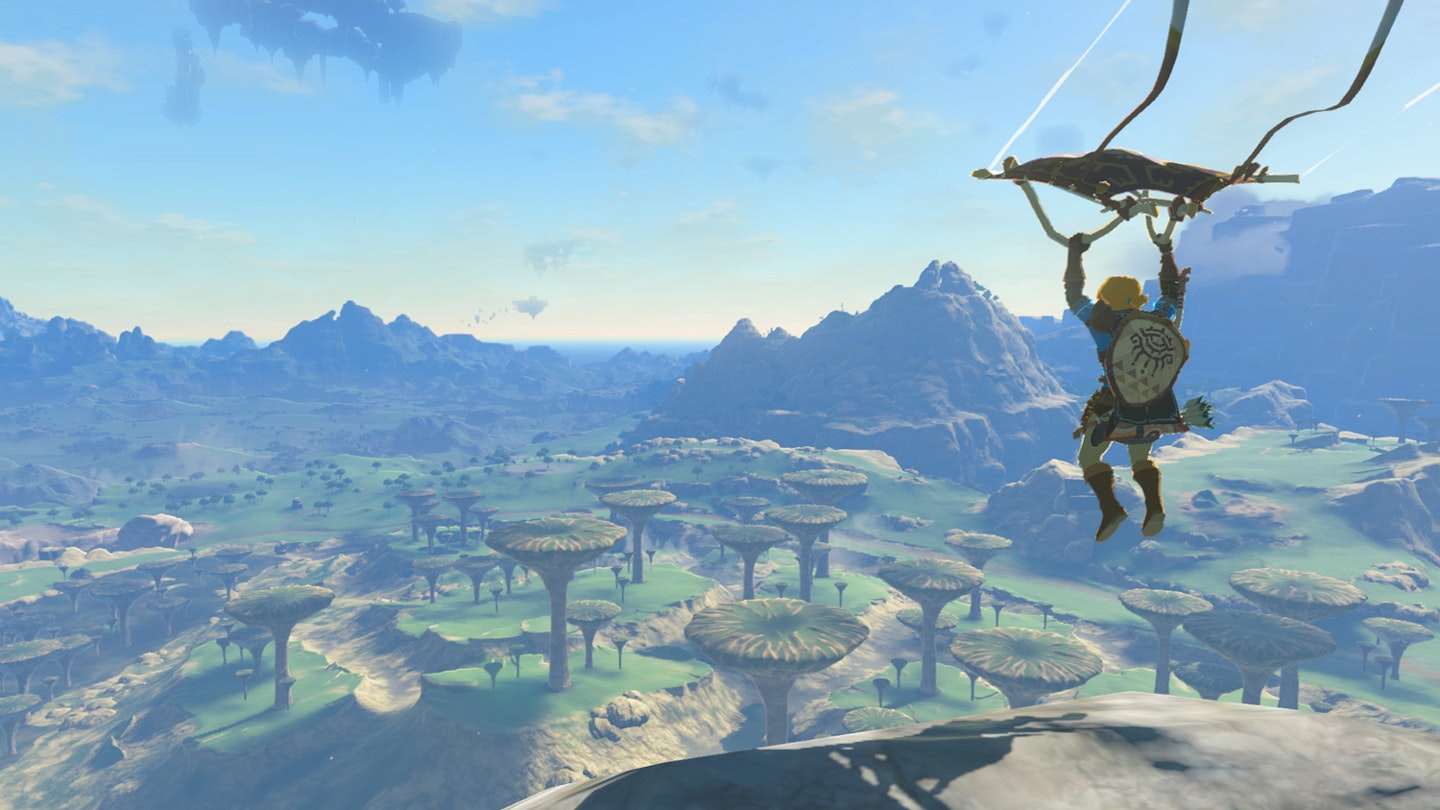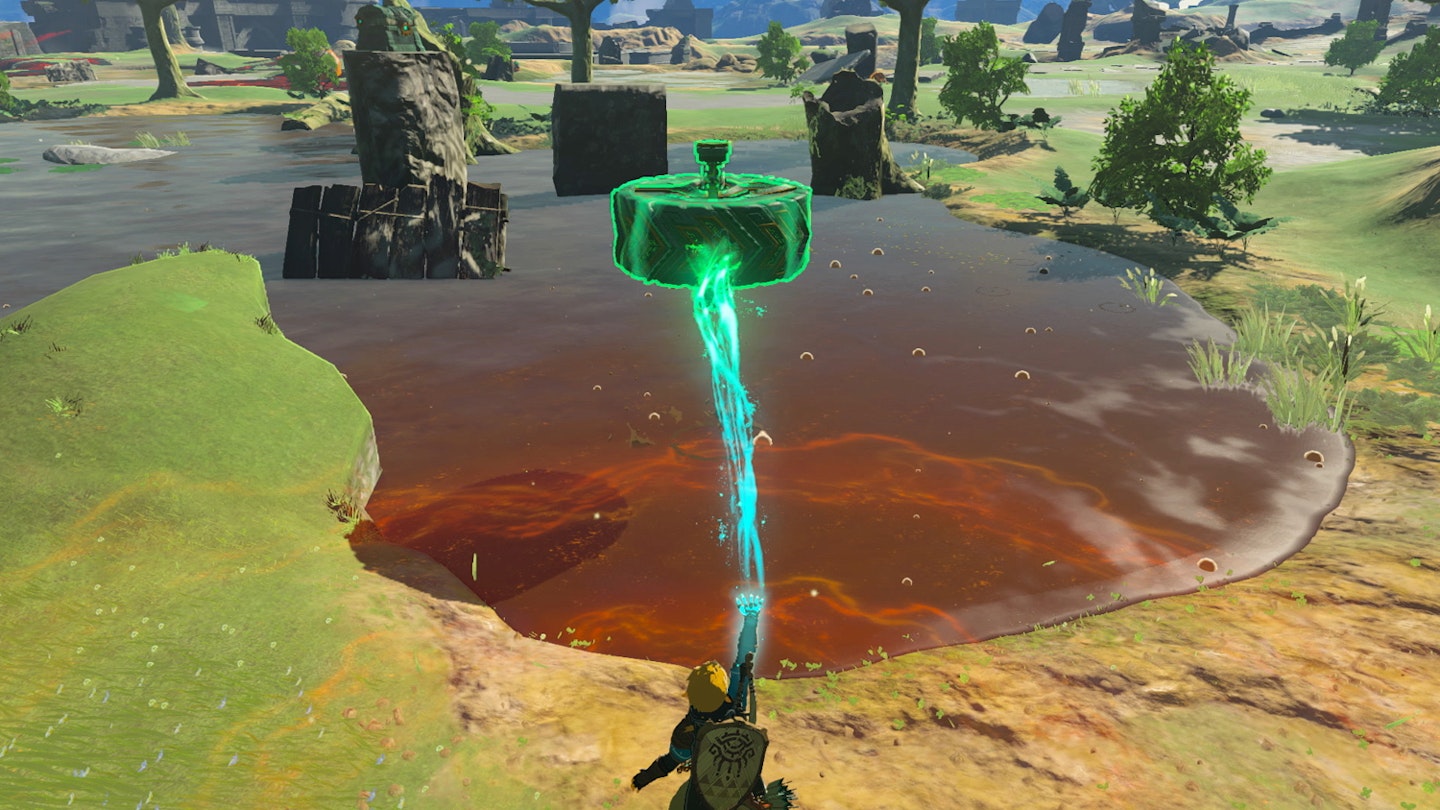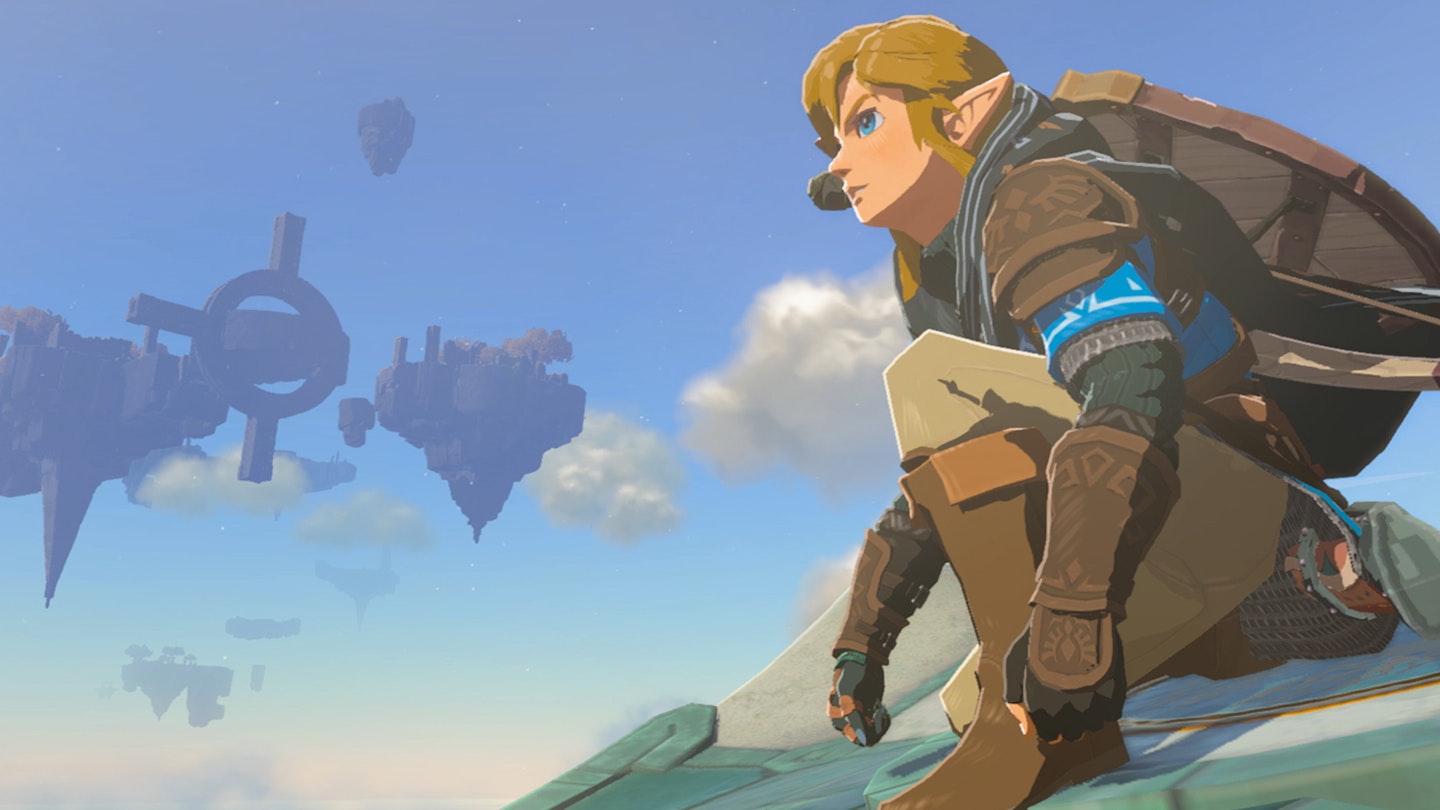Platforms: Nintendo Switch
When Link, fresh from a century-long slumber, staggered out into Breath Of The Wild’s re-imagined Hyrule, it wasn’t only the Zelda franchise that stood forever changed. The game catapulted Nintendo’s elfin swordsman into the modern era (and their nascent Switch into the top-selling consoles of all time), but it also redefined what video games could offer in terms of absolute freedom. Expanding on the promise of previous open world games, it gave players the autonomy to go where the whim took them, meeting its challenges on their own terms and allowing them to feel masters of their own destiny like no game had before. Until now. Because, returning us to Hyrule six years after Breath Of The Wild’s debut, Tears Of The Kingdom seizes upon that libertarian spirit and supercharges it, shattering what few gameplay barriers remained and delivering an experience where almost anything seems possible.

It’s testament to genius in simplicity that much of this newfound freedom springs from the addition of glue. Gone are the rune abilities of yore (magnetism, ice blocks, time stop and bombs), replaced with four completely different, game-altering powers. One allows you to attach objects to your weapons — ostensibly a mechanic to increase damage, but one that comes into its own with a little experimentation. Yes, you can stick a boulder to a sword to make a hammer, or a spiked ball to a spear for added heft, but things become interesting once you get creative with the game’s new Zonai tech. These artefacts of an advanced yet long extinct race (whose abandoned technology also adds new architecture and formidable mechanical enemies) provide endless gadgets for Link to use and abuse in the pursuit of absolute chaos. Stick a fire emitter on the end of a spear and you have a flamethrower. Put a spring on your shield and anyone who strikes it will be catapulted away. Swap the spring for a rocket and you have a jetpack. In essence, as long as something isn’t walking around or bolted to the floor, there’s a good chance you can turn it into an offensive weapon.
There’s an intoxicating sense of possibility to every moment of gameplay.
Continuing this adhesive theme, a second power brings the art of stickiness to the wider environment, allowing you to glue almost any two objects together to almost game-breaking effect. Thwarted by a gaping chasm? That’s nothing an axe and a passion for deforestation can’t overcome. Chop down a dozen trees, glue them end-to-end and voila: you have a bridge. A few logs and a sail will give you a boat. A few more and a fan will make a speed boat. Add four wheels to a wooden board and you have yourself a car. You get the idea. There’s an intoxicating sense of possibility to every moment of gameplay; a notion that you could access any place, overcome any obstacle, just by sticking one object to another and seeing what happens. Need to lift something up a hill? Attach a balloon and light a fire underneath. Want to create Hyrule’s first monorail? A box and a large metal hook will set you on the path. That this is a game in which it’s possible to defeat a giant lava monster while piloting a fighter plane cobbled together from fans, metal wings and a trolley tells you almost everything you need to know.
If the remaining two powers — a time reversal tool and one that lets you burrow vertically through solid rock — seem more pedestrian, it’s only because the previous two so radically alter the ebb and flow of gameplay. So much so, that even those who invested hundreds of hours into hunting for Koroks across every Hyrulian hill and dale in Breath Of The Wild, will find Tears Of The Kingdom a fresh and invigorating experience, despite a somewhat formulaic narrative.

The story picks up several years after the defeat of Calamity Ganon, with Link and Zelda exploring the catacombs beneath Hyrule castle, looking for clues about a sinister gloom rising from the depths. After inadvertently awakening the mummified corpse of The Demon King, Zelda is flung into a fissure, the Master Sword is shattered, and Link awakes to find himself stripped of clothes, hairband (cue a newly shaggy mane) and, crucially, his right arm, which is swiftly replaced with one from a Zonai corpse, turning him into a kind of necrotic Winter Soldier. The setup isn’t a million miles away from that of the first game, and will have you once more journey to the lands of the rock-loving Goron, the avian Ritu, the aquatic Zora and the desert-dwelling Gerudo, this time to deal with various gloom-inflicted disasters, recruiting familiar faces for the final battle along the way. There are a few twists and turns, and Zelda’s part in the story is thankfully more nuanced than having just been kidnapped yet again, but in story structure at least, Tears Of The Kingdom does bear faint traces of the DLC idea it started life as.
A living, breathing environment coupled with a euphoric, unparalleled sense of freedom.
None of that really matters with a world this inviting, however. As before, Hyrule’s sprawling landscape is a playground without peer. But just as the game mechanics have been overhauled, so too has the topography. The Demon King’s emergence has sundered the landscape, leaving chasms in the earth and other adverse conditions that make the first game’s rolling hills and verdant meadows far more perilous. The map, while at first glance covering the same land mass as before, has been expanded substantially. Starting with a new tutorial zone, Hyrule has been granted a dizzying verticality, with Zonai sky islands floating amongst the clouds like the Hallelujah Mountains of Avatar. That these provide a new venue for vertiginous platforming is true enough but they come into their own when employed as staging areas from which to base jump over Hyrule proper, skydiving over mountain and desert before whipping out the trusty Paraglider for a precision landing. Clearly inspired by the airways of Skyward Sword, this latest Zelda embraces the Y-Axis wholeheartedly, providing numerous inventive methods for Link to grab big air, from rockets and trampolines to balloons and even gust-inducing pine cones.

As above, so below: complementing access to the sky is a chance to plumb the depths, taking the action deep beneath the earth from whence the gloom originates. These spelunking trips into near total blackness aren’t quite as giddy as gliding through the heavens but provide another new dimension as you scrabble desperately for light-sources and take on minions of the dark. Spanning depths, surface and sky, the three-tiered map reinvigorates a landscape we once knew so well, granting an almost overwhelming scope to the play area this time around and ensuring it will be months, not weeks, before you want to emerge. There are Koroks to find, houses to build and furnish, myriad gastronomical delights to concoct, geoglyphs to explore, shrines to complete, and even signs to erect in an on-going side-quest that will appeal to budding semiologists. All of which is just as appealing, if not more so, then unravelling the mystery of Zelda’s fate. The storytelling here might not be on a par with something like The Last Of Us, but the real joy, once again, is in telling your own tale, in setting out for a distant shrine but getting side-tracked by a hidden cave, an ancient ruin, a merchant in distress or a mountainside of fresh powder simply begging to be shield-surfed.
If there’s any criticism to be made of Tears Of The Kingdom, it’s possibly that so much of Breath Of The Wild carries over: from the aesthetic, to key locations and many of the returning characters. The combat is sometimes fiddly, difficulty spikes feel occasionally mis-judged and some of the harder puzzles are positively obtuse, but everything that made up Breath Of The Wild persists here for a reason. We could say that Nintendo haven’t re-invented the wheel, but they have: in allowing you to stick four on a tree trunk and construct a rudimentary luge. In carrying forward what worked so flawlessly and building out new, transformative mechanics, Tears Of The Kingdom feels like the game Breath Of The Wild always wanted to be: a living, breathing environment coupled with a euphoric, unparalleled sense of freedom. Breath Of The Wild was an instant classic but with this precisely-calibrated, audaciously-conceived sequel, Nintendo has accomplished the improbable and demonstrated that you really can improve upon perfection.
